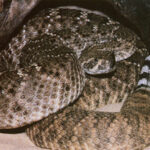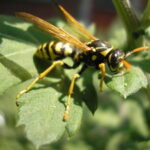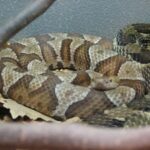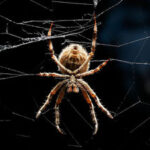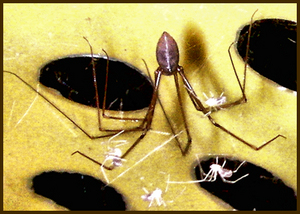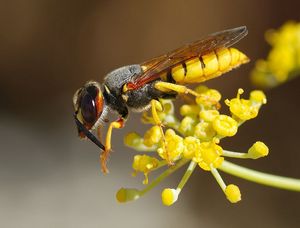Bees and wasps are common insects whose stings are not only poisonous, but the most likely to cause medical problems if there is an allergic reaction to the venomous sting. More people die of bee and wasp stings every year than from snake or spider bites.
A single bee or wasp sting hurts when it occurs and will leave a red, swollen area that usually itches. Unless you have an allergic reaction, the itching and swelling will generally disappear on its own within hours or a couple of days at most. If you can see that the bee or wasp has left a stinger behind, it’s a good idea to remove it and disinfect the area.
Bees and wasps both live in colonies, so if one bee or wasp stings you, there’s a good chance others may sting also if given the opportunity. If there are multiple stings, not only is it going to be painful, but if you have an allergic reaction, you will likely have serious medical problems, which could result in death if you do not receive immediate medical attention. If you know that you’re significantly allergic to bee or wasp stings, you should already have with you, or readily available, an emergency sting kit during those times of the year when bee and wasp stings are most likely to occur.
Although everyone at one time or another will probably suffer a bee or wasp sting in their lifetime, prevention is always a good idea – especially if you think you may have even a mild allergy to bee and wasp stings. To begin with, stay away from areas you know have bee hives or wasp nests. If you come upon a hive or nest, leave it alone. This is particularly important when mowing lawn or operating other lawn care equipment. If you should accidentally disturb a hive or nest, and the bees or wasps start swarming, don’t swat at them. Cover any exposed areas as best you can and immediately leave the area. When in areas where you know there’s a potential for bees or wasps, wear long pants, a shirt with long sleeves, gloves, and a hat.
If you are stung by a bee or wasp and require medical attention, treatment will generally depend upon the severity of your allergic reaction. If you don’t experience breathing difficulties, but itch all over and develop a rash, most doctors will prescribe an antihistamine and maybe epinephrine and steroids. If your breathing is affected at all, however, you can expect to be given injections of all three. If your reaction to the bee or wasp sting is life-threatening, meaning a drop in blood pressure and serious breathing difficulties, you will be admitted to the hospital and be treated with intravenous fluids, antihistamines, steroids, epinephrine, and possibly a breathing tube.
If you know the location of a bee or wasp nest and wish to destroy it yourself, use an aerosol spray designed specifically for bees and wasps. The aerosol can should be the kind that will shoot a high volume stream as far or high as 15 to 20 feet. This will give an excellent knock down and kill of the bees or wasps. If the nest is overhead, take care not to stand directly beneath it. The insects will immediately fall to the ground, but are still capable of stinging for a short time. The best time to spray nests is either early in the morning before the insects have left the nest or hive, or after dark when they have returned from their daytime activities.
Although bees and wasps are merely an unpleasant annoyance to most people, an allergic reaction to a sting can be deadly for others. For hypersensitive individuals, immediate emergency measures must be taken if stung. It’s a good idea for such a person to carry a card or medical bracelet to alert others of their allergy to bee and wasp stings, if the situation should arise. Medic Alert tags are also a good idea. A tag can be purchased from the Medic Alert Foundation, 2323 Colorado Avenue, Turlock, California 95380. Their toll free number is: 1-800-922-3320.
Reference:
- Ohio State University, Columbus, OH
